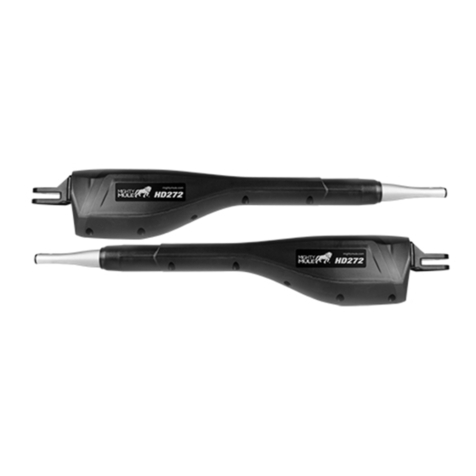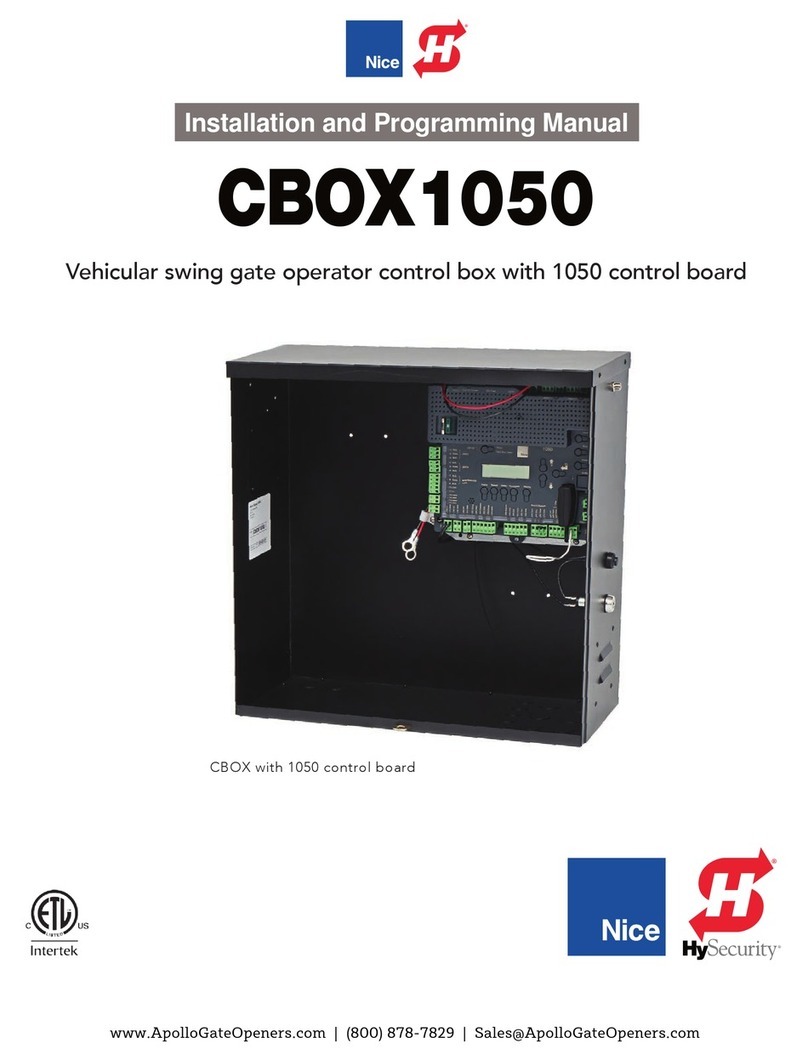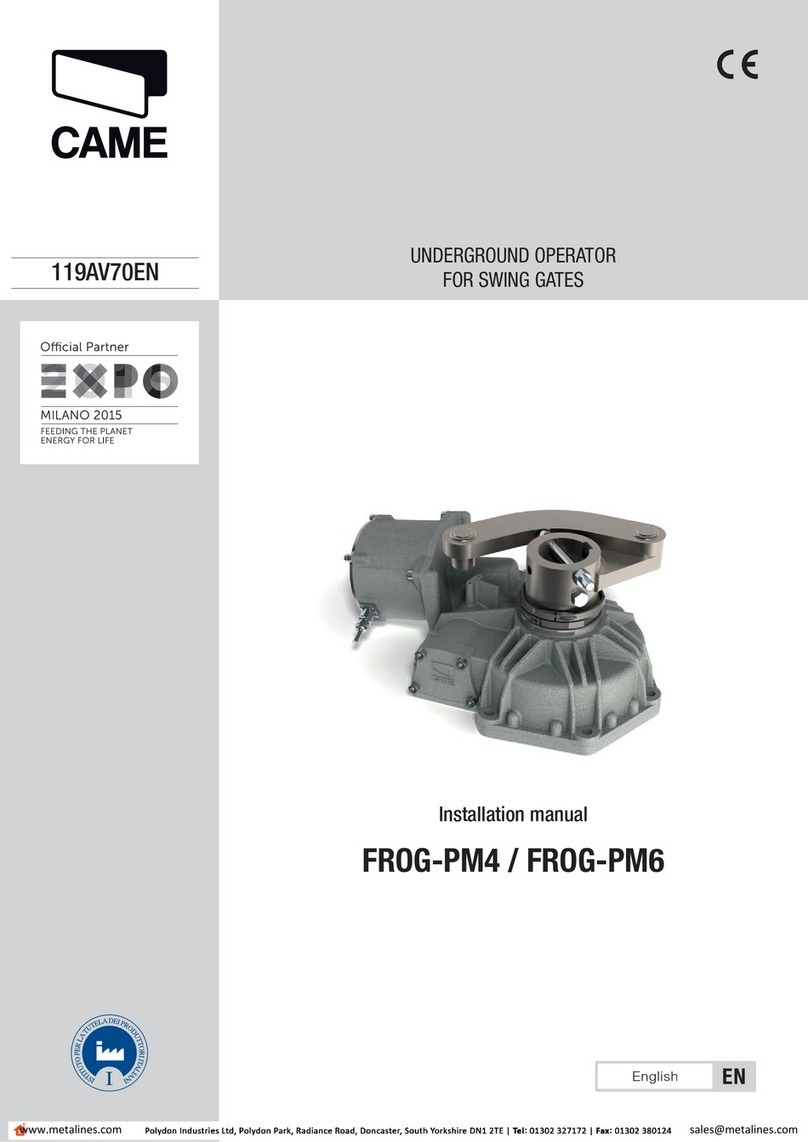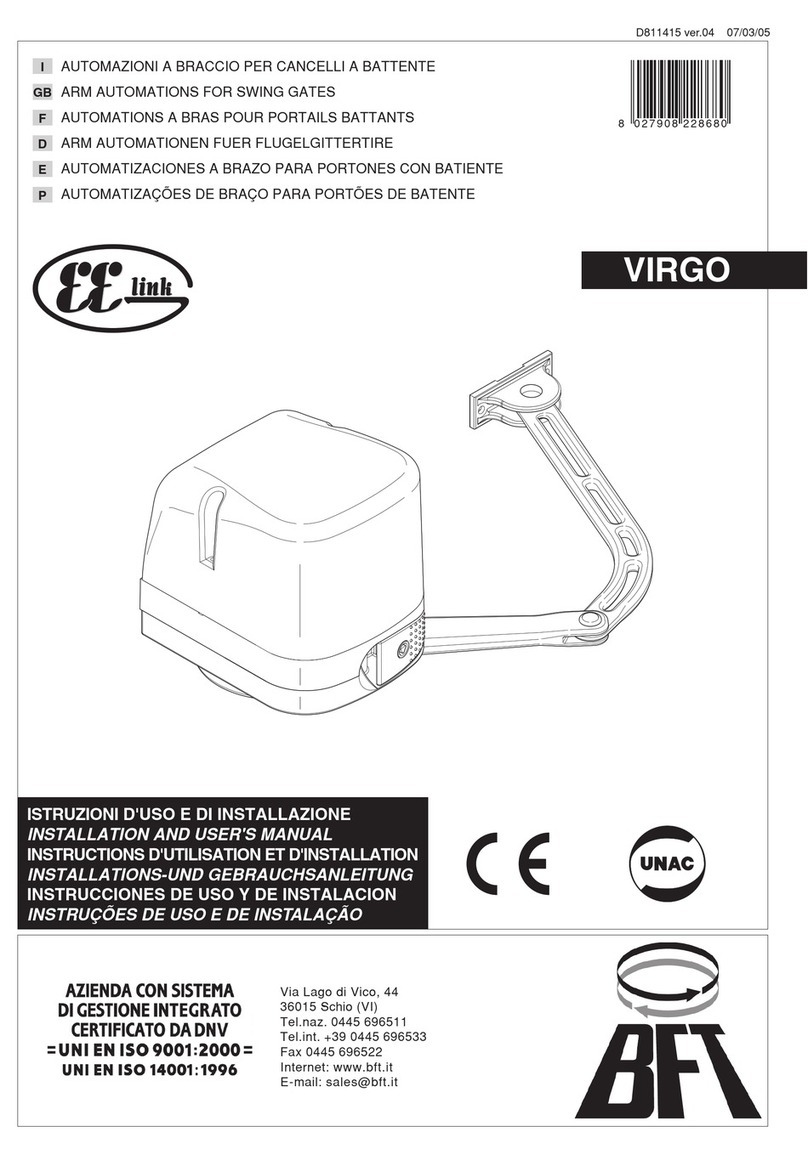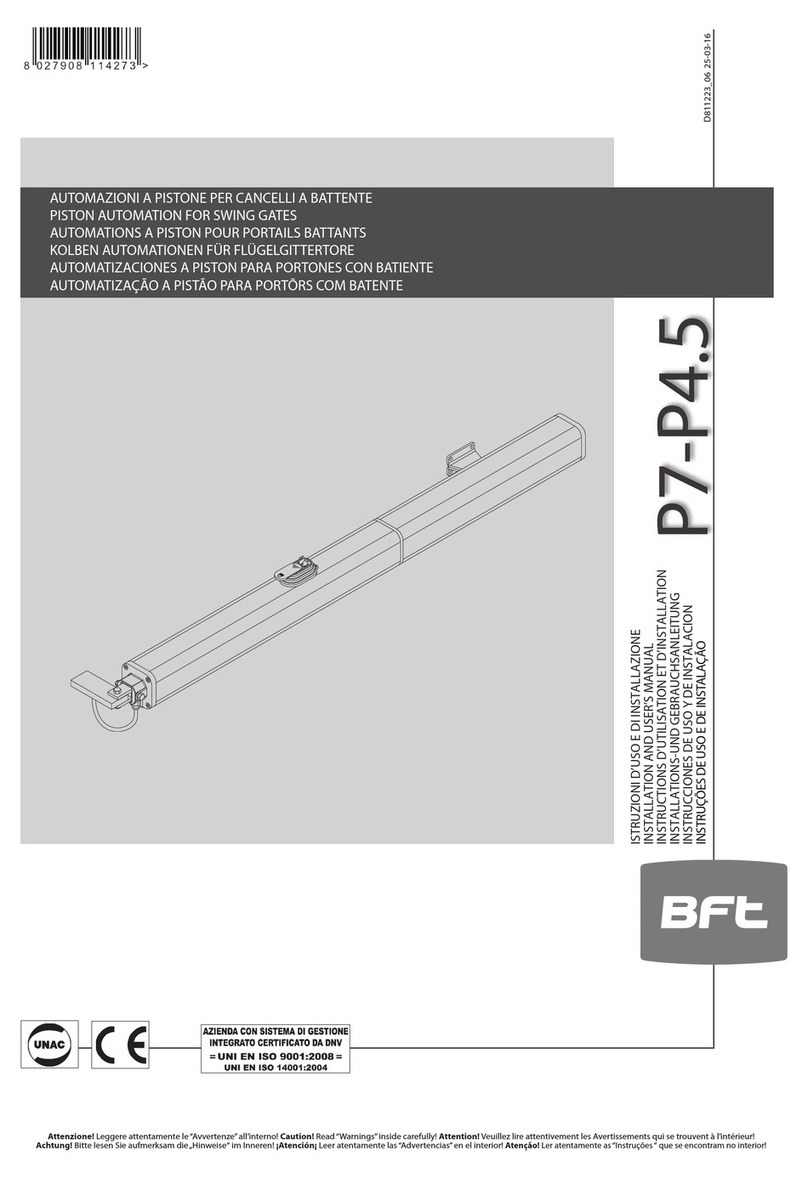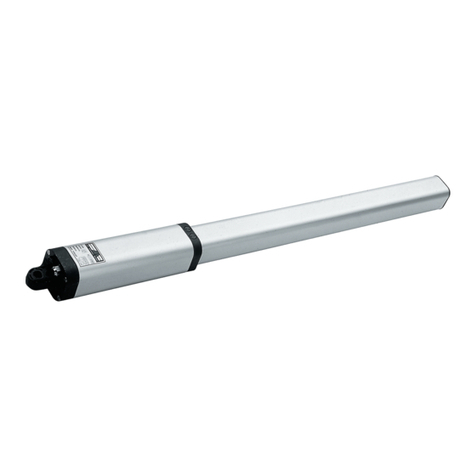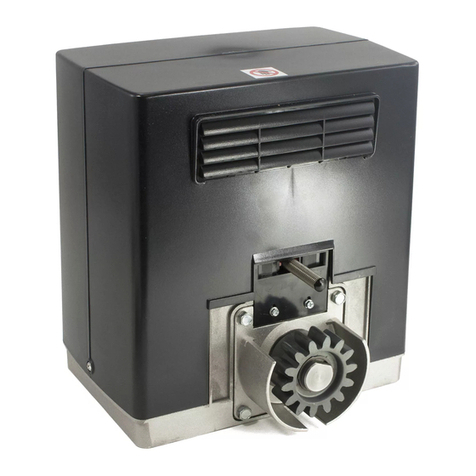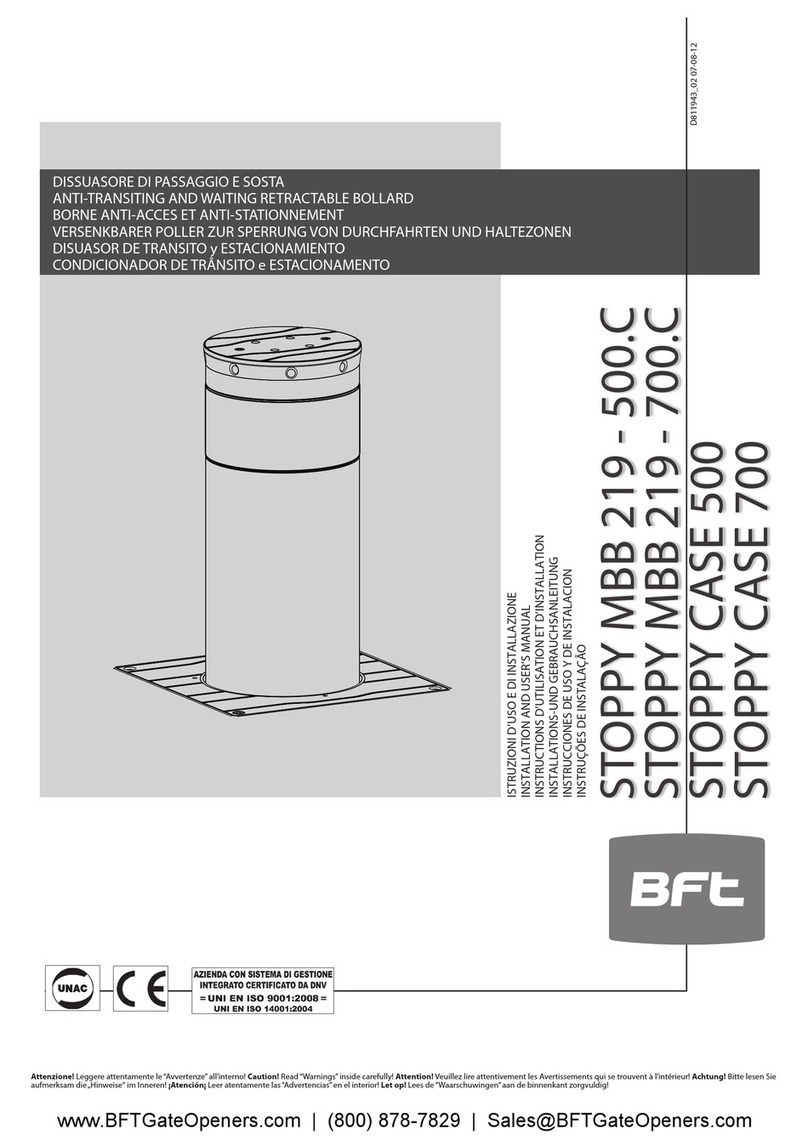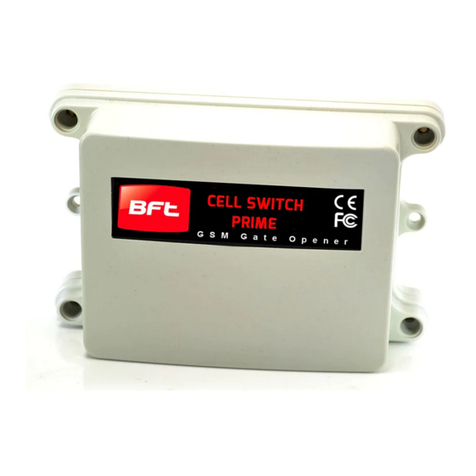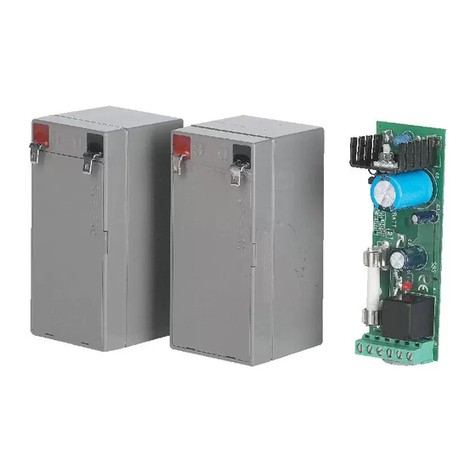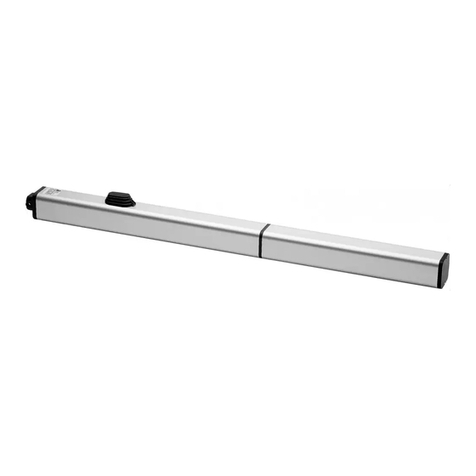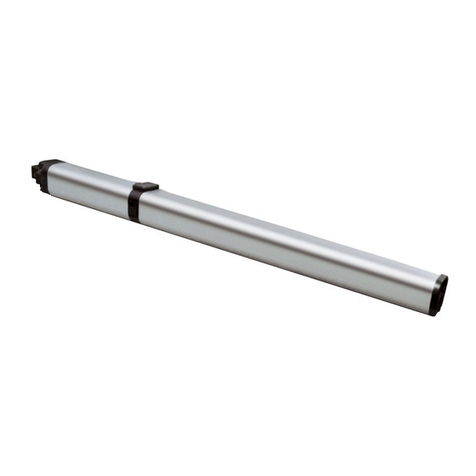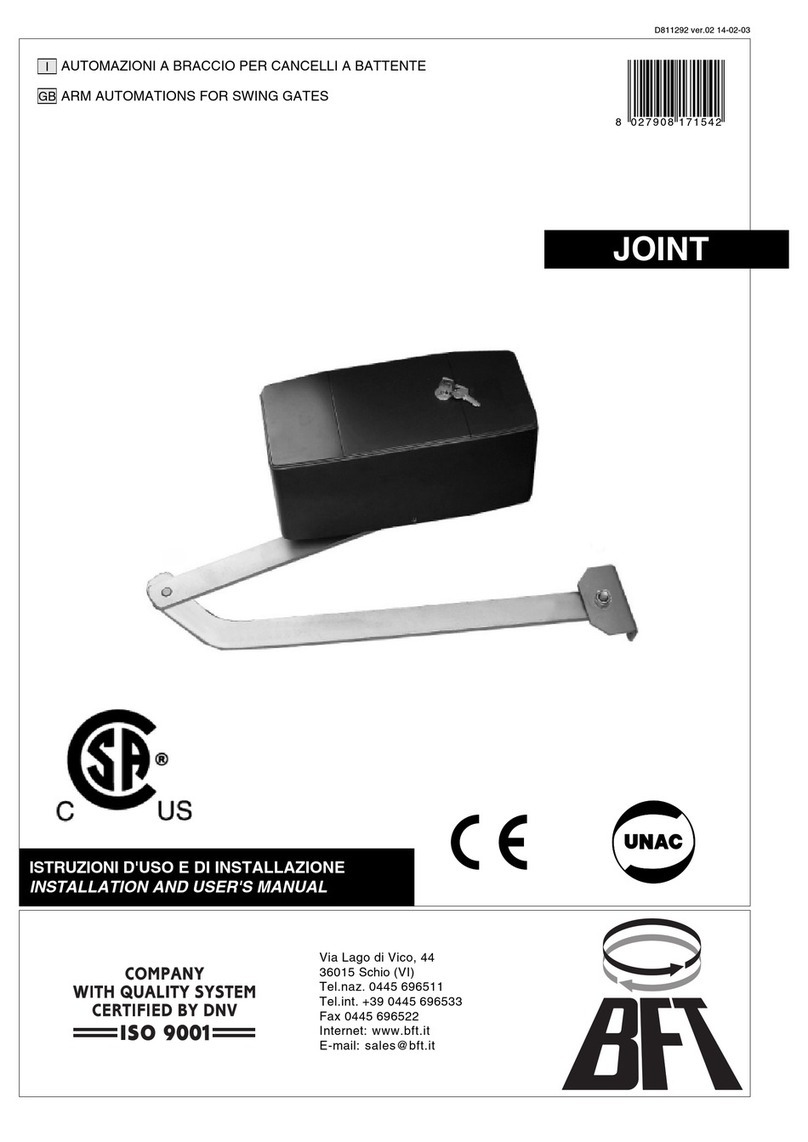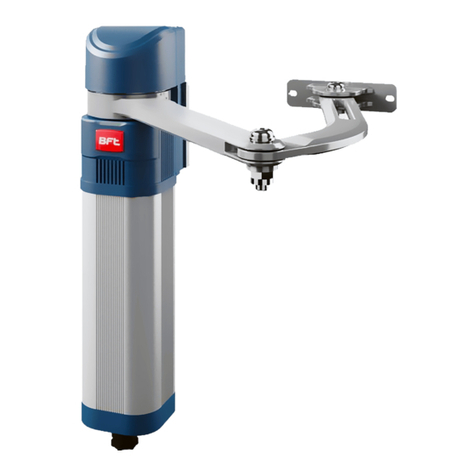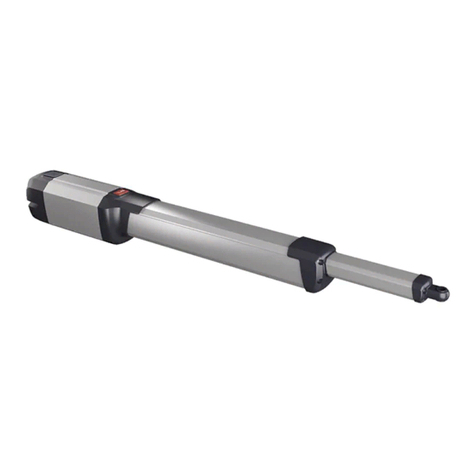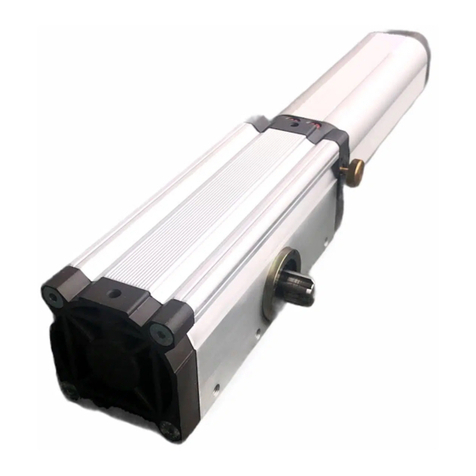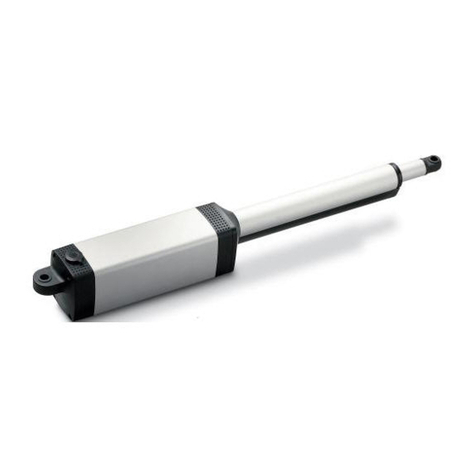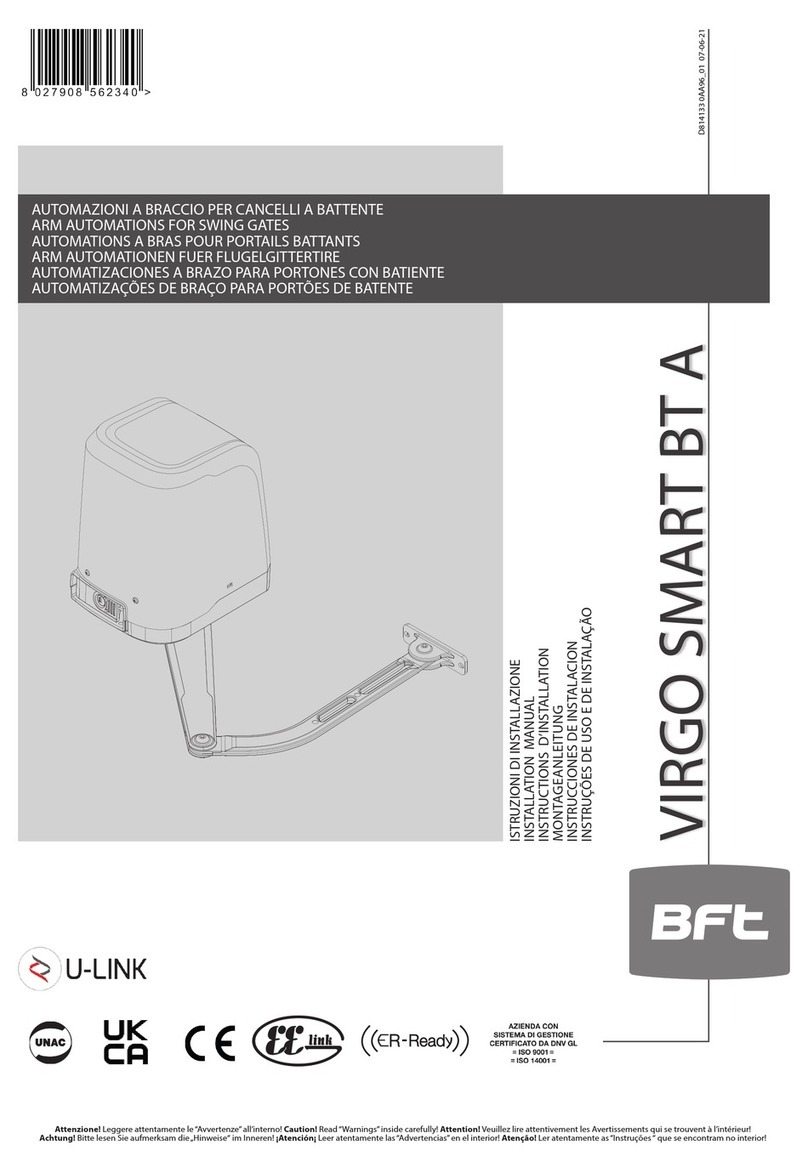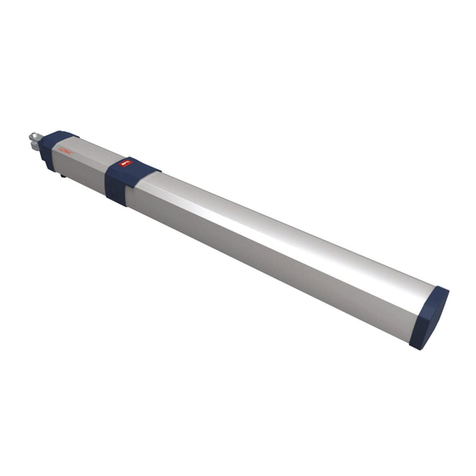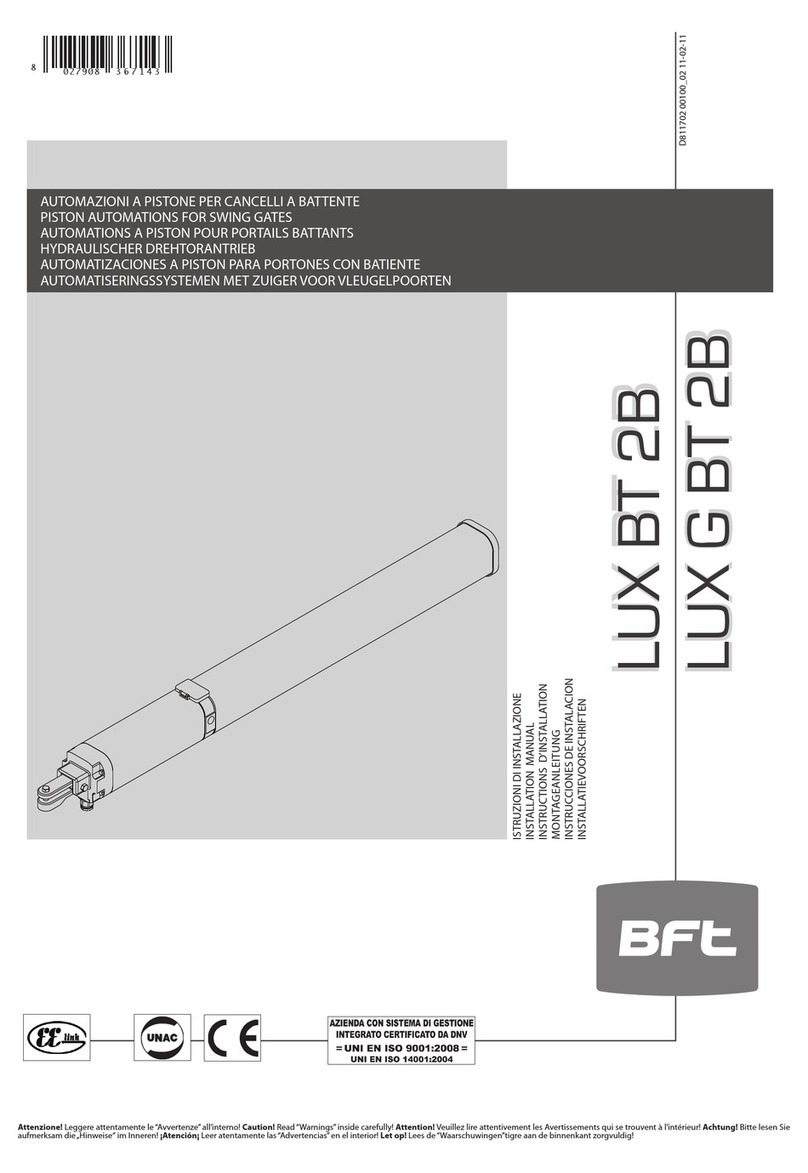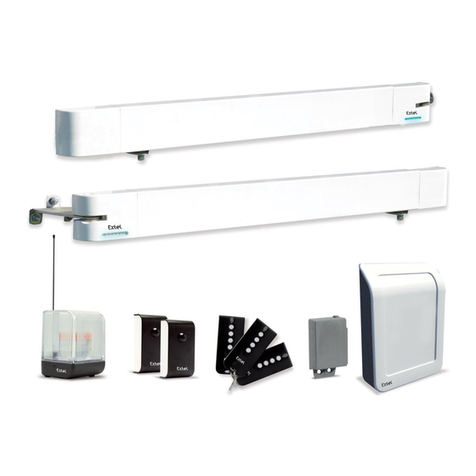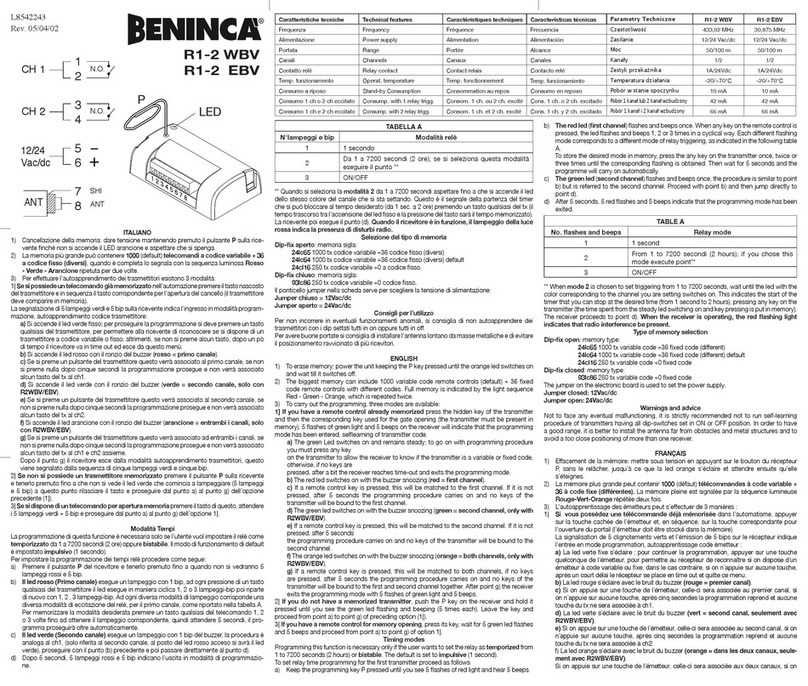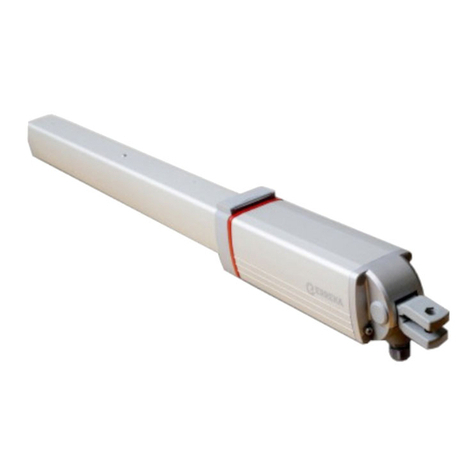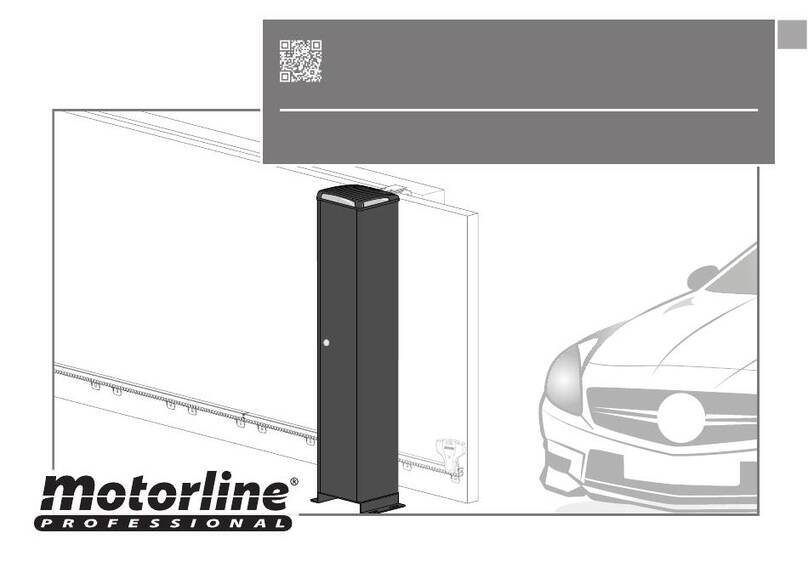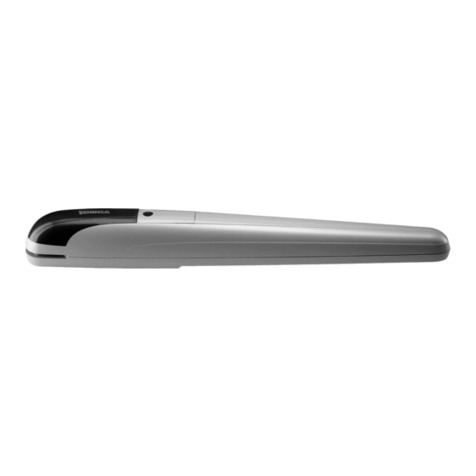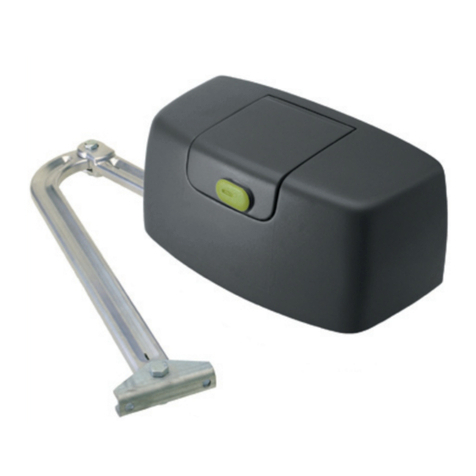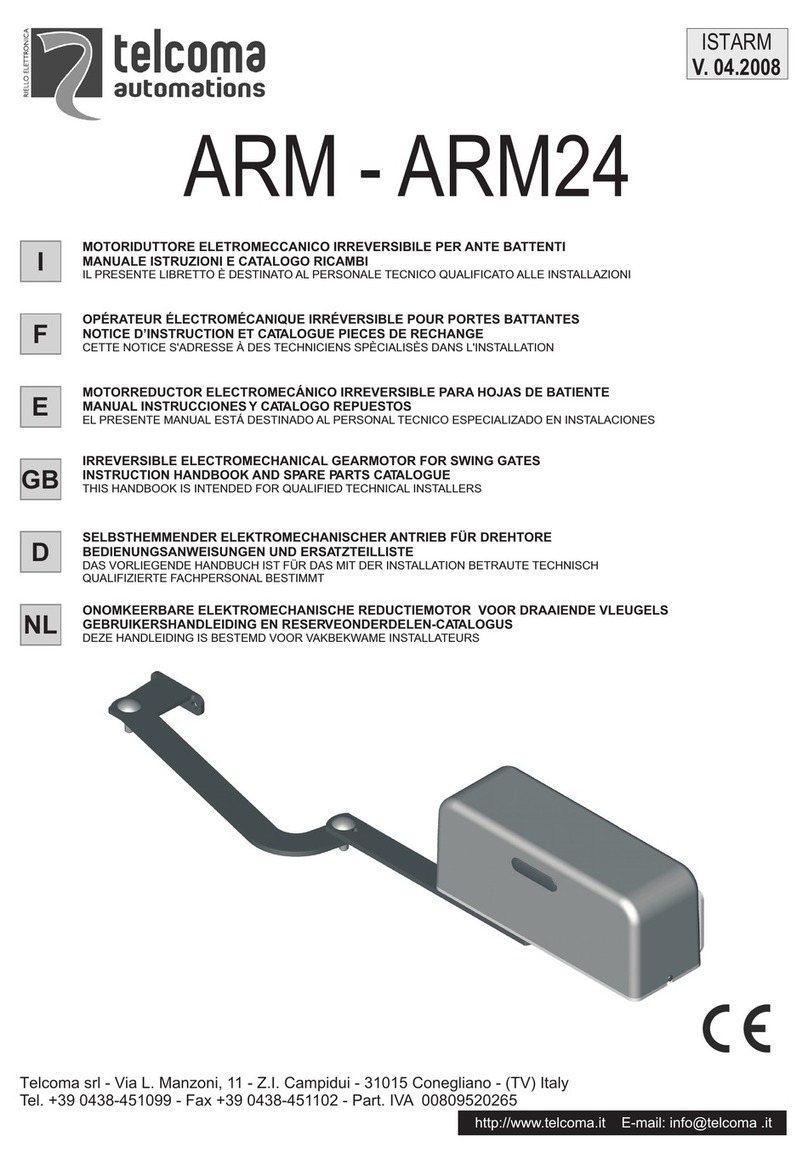1. Install the gate operator only when:
a. The operator is appropriate for the construction and the usage class of the gate.
b. All openings of a horizontal slide gate are guarded or screened fro the botto of the gate to a
ini u of 4' (1.2 ) above the ground to prevent a 2-1/4" (6 c ) dia eter sphere fro passing
through the openings anywhere in the gate, and in that portion of the adjacent fence that the gate
covers in the open position.
c. All exposed pinch points are eli inated or guarded, and guarding is supplied for exposed rollers.
2. The operator is intended for installation only on gates used for vehicles. Pedestrians ust be supplied with
a separate access opening. The pedestrian access opening shall be designed to pro ote pedestrian usage.
Locate the gate such that persons will not co e in contact with the vehicular gate during the entire path of
travel of the vehicular gate.
3. The gate ust be installed in a location so that enough clearance is supplied between the gate and
adjacent structures when opening and closing to reduce the risk of entrap ent. Swinging gates shall not
open into public access areas.
4. The gate ust be properly installed and work freely in both directions prior to the installation of the gate
operator.
5. Controls intended for user activation ust be located at least six feet (6') away fro any oving part of the
gate and where the user is prevented fro reaching over, under, around or through the gate to operate the
controls. Outdoor or easily accessible controls shall have a security feature to prevent unauthorized use.
6. The Stop and/or Reset (if provided separately) ust be located in the line-of-sight of the gate. Activation of
the reset control shall not cause the operator to start.
7. A ini u of two (2) WARNING SIGNS (supplied with the gate operator) shall be installed, one on each side
of the gate where easily visible.
8. For a gate operator utilizing a non-contact sensor:
a. Reference owner’s anual regarding place ent of non-contact sensor for each type of application.
b. Care shall be exercised to reduce the risk of nuisance tripping, such as when a vehicle trips the sensor
while the gate is still oving.
c. One or ore non-contact sensors shall be located where the risk of entrap ent or obstruction exists,
such as the peri eter reachable by a oving gate or barrier.
9. For a gate operator utilizing a contact sensor such as an edge sensor:
a. One or ore contact sensors shall be located where the risk of entrap ent or obstruction exists, such
as at the leading edge, trailing edge and post ounted both inside and outside of a vehicular horizontal
slide gate.
b. One or ore contact sensors shall be located at the botto edge of a vehicular vertical lift gate.
c. A hard wired contact sensor shall be located and its wiring arranged so the co unication between the
sensor and the gate operator is not subject to echanical da age.
d. A wireless contact sensor such as the one that trans its radio frequency (RF) signals to the gate
operator for entrap ent protection functions shall be located where the trans ission of the signals are
not obstructed or i peded by building structures, natural landscaping or si ilar obstruction. A wireless
contact sensor shall function under the intended end-use conditions.
e. One or ore contact sensors shall be located on the inside and outside leading edge of a swing gate.
Additionally, if the botto edge of a swing gate is greater than 6" (152 ) above the ground at any
point in its arc of travel, one or ore contact sensors shall be located on the botto edge.
f. One or ore contact sensors shall be located at the botto edge of a vertical barrier (ar ).
